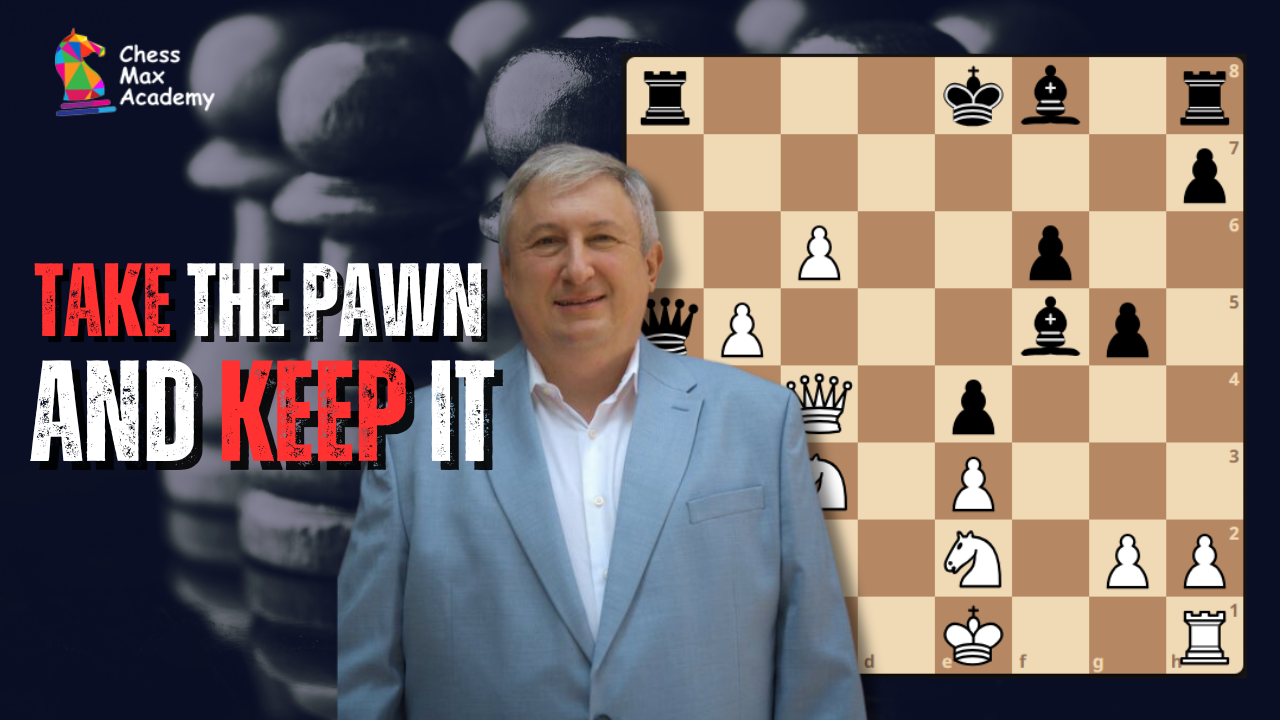In this game played online, GM Dlugy played the London System, a flexible and solid opening for White, characterized by the setup with pawns on d4 and e3, the knight on f3, and the bishop on f4.
This time, black responded with the move…c5, pressuring the “London pawn triangle” (c3-d4-e3) and opening the diagonal for the Queen on b6, looking at the b2 pawn.
Let’s see how GM Max Dlugy approached the game and how he managed to take the c5 pawn, keep it, and use it as an advantage in the endgame.
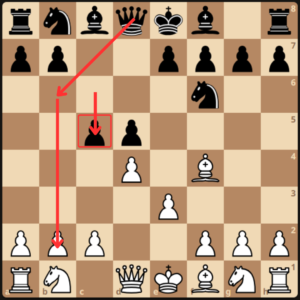
GM Dlugy grabbed the c-pawn and tried to defend it.
Black opened the diagonal with 4…e6. White defended the pawn with 5.b4 and black played Nc6, a normal developing move.

The b4 move also prevents the immediate Qa5. GM Dlugy pinned the knight with 6.Bb5. Black then developed his bishop to d7 to support the knight and block the pin.
The game progressed 7.c3 defending the b4 pawn and …a5, continuing the pressure in the b-pawn, as black tries to gain the material back.

White defended the b-pawn with 8.Qb3, and black spent some time thinking about his reply.
The main move here is Ne4 to occupy the center, and as expected, black played it.
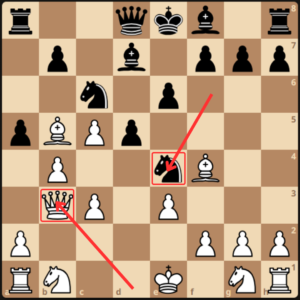
This was simply met by 9.f3, attacking the knight.
Here, black has 3 options, either to retreat the knight to f6 and lose tempo, or counter attack with e5 or g5.
Black played g5, which is not a good move.
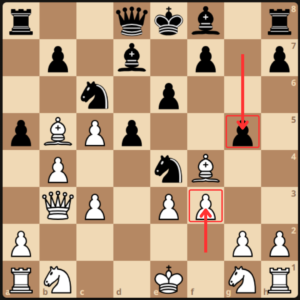
White trades his bishop for the knight 10.Bxc6 Bxc6 and moves his dark-squared bishop to e5, hitting the rook.
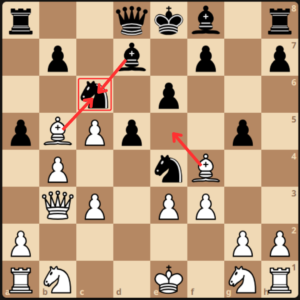
11.Be5 is then met by f6 which trapped the knight after white retreated his bishop to d4.
Now, black has to go for the bishop, otherwise, he will be down a piece. 12…e5 13.fxe4.
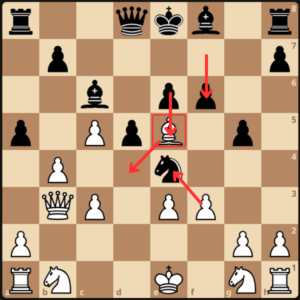
13…exd4. In this position, instead of the immediate recapture on d4, GM Dlugy played the strong move b5, pushing the bishop back. Black counter attacks with a4, but after Qb4, black has no choice to retreat his bishop to d7.
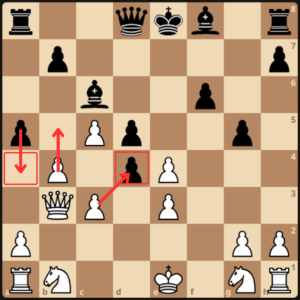
14…Bd7 15.cxd4 and black captured the e4 pawn.
White then developed his knight to c3, attacking both a4 and e4 pawns.
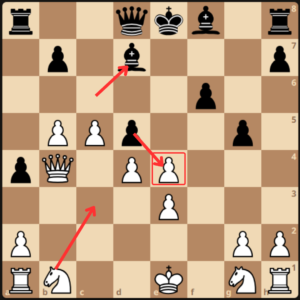
At this point, black’s position looks miserable. His pieces are not well-developed and the queenside is prone to attack.
Black pushed his pawn to c6. (cxd5 is not possible for white due to Bxb4). GM Dlugy moved his queen to c4, preparing to play the eventual c6.
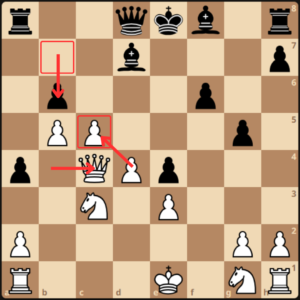
18…bxc5 19.dxc5, a pawn exchange left white with 2 strong pawns in the b and c files.

19…Bf5 trying to defend the e4 pawn, and white pushed his pawn to c6.
20.c6 and black brought his queen to a5. GM Dlugy then unleashed his other knight to e2, preparing to castle and make the rook join the attack.
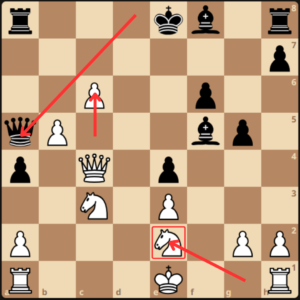
In this position, black is hopeless. The pawns on b and c files are unstoppable and with knights and rooks joining, there is not enough defense to resist the attack. Black resigned.
Summary
In this game, we could learn that assessing the best moves in chess is crucial because each move can dramatically alter the course of the game. The game above showed how an inaccuracy in move 9…g5 caused troubles for black. He could just have retreated his knight to f6, played g6, fianchetto his bishop to g7, and played for equality. Instead, he chose a poorly assessed move that weakened his position.









